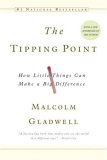Summary | Excerpt | Reviews | Readalikes | Genres & Themes | Author Bio

Critics' Opinion:
Readers' Opinion:
First Published:
Feb 2000, 279 pages
Paperback:
Dec 2001, 304 pages
In the same two-year period, fifteen hundred miles away, near Buffalo, New York, another man — a kind of Boss Man clone — worked the distressed downtown streets of Jamestown. His name was Nushawn Williams, although he also went by the names "Face," "Sly," and "Shyteek." Williams juggled dozens of girls, maintaining three or four different apartments around the city, and all the while supporting himself by smuggling drugs up from the Bronx. (As one epidemiologist familiar with the case told me flatly, "The man was a genius. If I could get away with what Williams did, I'd never have to work a day again in my life.") Williams, like Boss Man, was a charmer. He would buy his girlfriends roses, let them braid his long hair, and host all-night marijuana and malt liquor-fueled orgies at his apartments. "I slept with him three or four times in one night," one of his partners remembered. "Me and him, we used to party together all the time. . . . After Face had sex, his friends would do it too. One would walk out, the other would walk in." Williams is now in jail. He is known to have infected at least sixteen of his former girlfriends with the AIDS virus. And most famously, in the book And the Band Played On Randy Shilts discusses at length the so-called Patient Zero of AIDS, the French-Canadian flight attendant Gaetan Dugas, who claimed to have 2,500 sexual partners all over North America, and who was linked to at least 40 of the earliest cases of AIDS in California and New York. These are the kinds of people who make epidemics of disease tip.
Social epidemics work in exactly the same way. They are also driven by the efforts of a handful of exceptional people. In this case, it's not sexual appetites that set them apart. It's things like how sociable they are, or how energetic or knowledgeable or influential among their peers. In the case of Hush Puppies, the great mystery is how those shoes went from something worn by a few fashion-forward downtown Manhattan hipsters to being sold in malls across the country. What was the connection between the East Village and Middle America? The Law of the Few says the answer is that one of these exceptional people found out about the trend, and through social connections and energy and enthusiasm and personality spread the word about Hush Puppies just as people like Gaetan Dugas and Nushawn Williams were able to spread HIV.
2
In Baltimore, when the city's public clinics suffered cutbacks, the nature of the syphilis affecting the city's poor neighborhoods changed. It used to be an acute infection, something that most people could get treated fairly quickly before they had a chance to infect many others. But with the cutbacks, syphilis increasingly became a chronic disease, and the disease's carriers had three or four or five times longer to pass on their infection. Epidemics tip because of the extraordinary efforts of a few select carriers. But they also sometimes tip when something happens to transform the epidemic agent itself.
This is a well-known principle in virology. The strains of flu that circulate at the beginning of each winter's flu epidemic are quite different from the strains of flu that circulate at the end. The most famous flu epidemic of all — the pandemic of 1918 — was first spotted in the spring of that year and was, relatively speaking, quite tame. But over the summer the virus underwent some strange transformation and over the next six months ended up killing between 20 and 40 million people worldwide. Nothing had changed in the way in which the virus was being spread. But the virus had suddenly become much more deadly.
The Dutch AIDS researcher Jaap Goudsmit argues that this same kind of dramatic transformation happened with HIV. Goudsmit's work focuses on what is known as Pneumocystis carinii pneumonia, or PCP. All of us carry the bacterium in our bodies, probably since birth or immediately thereafter. In most of us it is harmless. Our immune systems keep it in check easily. But if something, such as HIV, wipes out our immune system, it becomes so uncontrollable that it can cause a deadly form of pneumonia. PCP is so common among AIDS patients, in fact, that it has come to be seen as an almost certain indication of the presence of the virus. What Goudsmit did was go back in the medical literature and look for cases of PCP, and what he found is quite chilling. Just after World War II, beginning in the Baltic port city of Danzig and spreading through central Europe, there was an epidemic of PCP that claimed the lives of thousands of small children.
© 2000 by Malcolm Gladwell




Choose an author as you would a friend
Click Here to find out who said this, as well as discovering other famous literary quotes!
Your guide toexceptional books
BookBrowse seeks out and recommends the best in contemporary fiction and nonfiction—books that not only engage and entertain but also deepen our understanding of ourselves and the world around us.